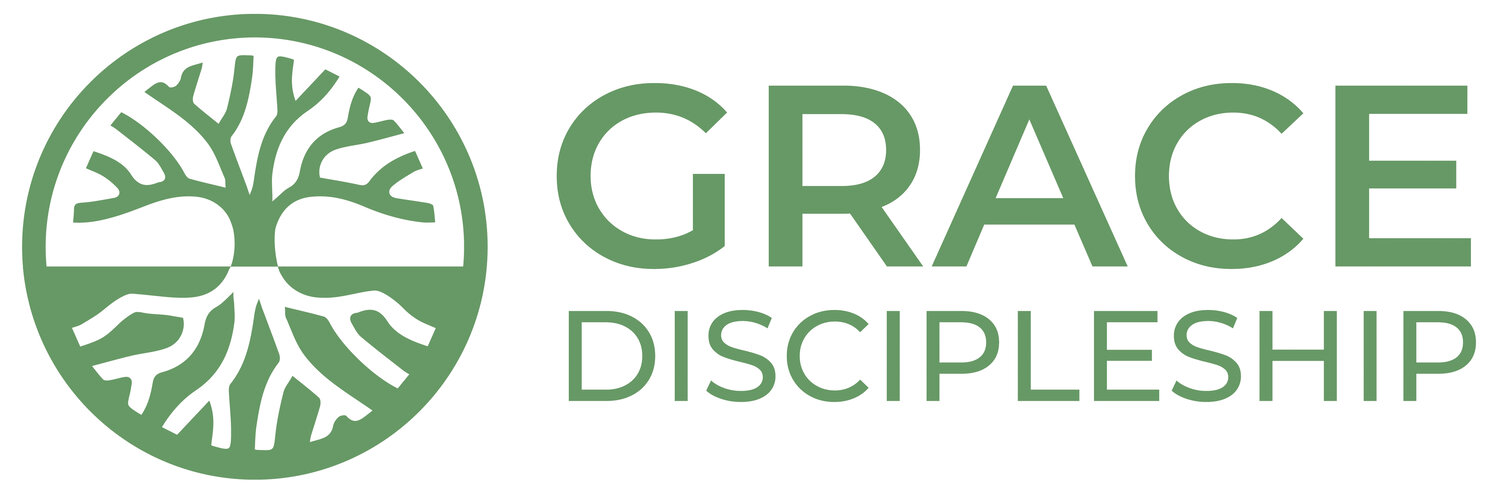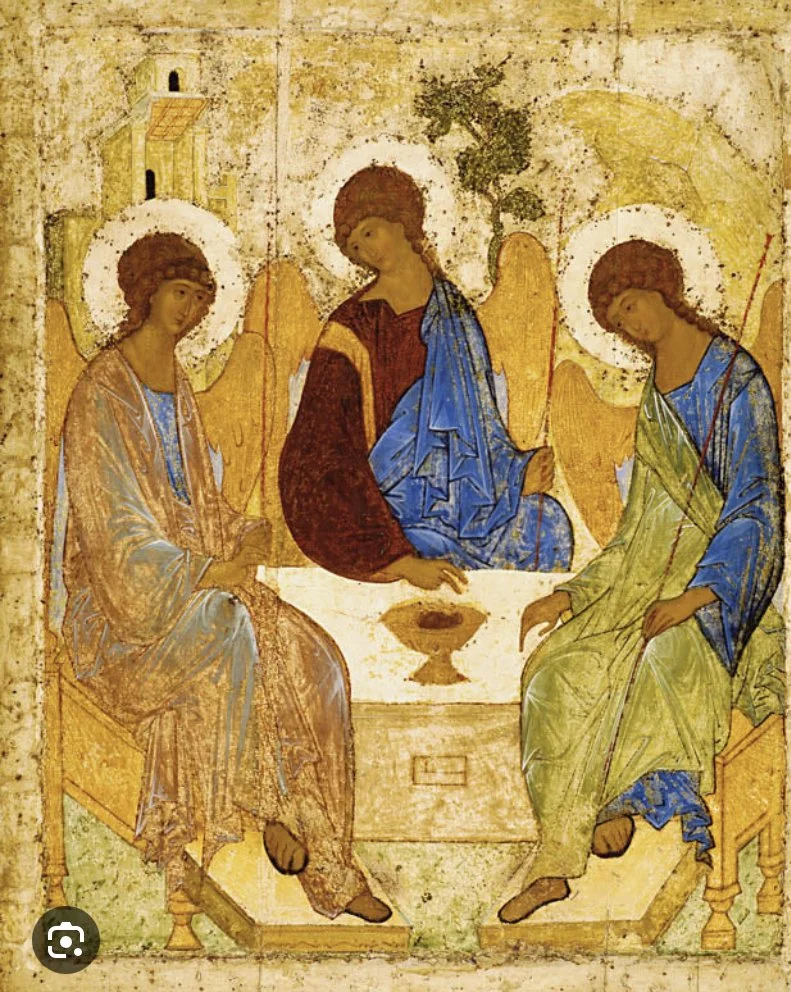Trinity Icon
My son Luke moves into the dorm in 2 weeks. Emily and I are both sad and rather happy.
Life continues to be busy with work, connecting with friends and enjoying these last weeks of summer. And Life is hard for many people in this world we live in. That are so many difficult images from those suffering across the globe.
I've admitted that I need creative ways to pray and be strengthened by God to face little personal losses and large global losses. The Trinity icon I shared in my last newsletter has been one of those creative ways to connect with God in prayer and daily life.
I have never really been an icon kind of person. These weird old paintings never seemed to be helpful until I understood their context and underlying meaning. The long faces and big eyes are highly symbolic!
Andrew Rublev painted the Trinity icon in 1425, nearly a 100 years before the Protestant Reformation. Russia in 1425 was on the brink of civil war and experiencing political division, fear mongering, hatred and violence. Rublev had great compassion for the Russian church and saw the need to call Christians to the grounding and nurturing presence of Father, Son and Holy Spirit.
Henri Nouwen writes in his book Behold the Beauty of the Lord that, “I have chosen icons because they are created for the sole purpose of offering access through the gate of the visible, to the mystery of the invisible (p. 23).”
I appreciate Nouwen's pursuit of God and I would add that praying with this icon isn’t getting something you don’t already have (access) but experiencing what is real and already true in Christ.
This icon has nurtured me and has been something I can carry with me throughout the day. It is a quiet space to help me navigate our current day of division, fear mongering and violence.
Rublev depicts the Trinity as the three heavenly visitors who were hosted by Abraham and Sarah as told in Genesis 18:1-8. The old couple radically hosted them and this is when the divine visitors gave the surprising news that Sarah will give birth to Issac.
My imagination is captured by this 600 year icon. Jesus is in the middle and is clothed with the color blue representing humanity and life on earth (sea and sky). Gold represents provision and the Father (to the left) is draped with divine supply. Green is upon the Holy Spirit (to the right) and represents fertility, blooming and aliveness.
All three faces are the same representing the likeness of the Trinity. Their faces are calm, at peace and reflect a kindness even if they sit with humans who are doubtful, scared and struggling. Joy and sorrow are both welcomed here.
The hands of the Father are blessing the son. The two fingers of the Son represent being both human and divine. And the fingers of the Holy Spirit are pointing down to the open space at the table. This fourth space is for you and for me.
Just like Jesus who invited his disciples into the Trinity (John 14-17), we too are invited to engage with God who considers our heart their home (John 14:23).
Historians of this icon noted that for years there was a glue residue on the small box. It is thought that this is where a small mirror was fastened. As one would look upon this image, they would see themselves at the table and right there with the Trinity. At the table of divine fellowship we join in on the receiving and giving back.
Side note: Larry Crabb had a huge impact on my trinitarian thinking. He recommended to me this short, simple book on the Trinity.
Icons are an excellent companion to our studying of Scripture. Where Western Christianity tends to focus on intellectual hearing, Eastern Christianity (where iconography began) tends to focus on gazing, seeing with the eyes of your heart and being impacted by holy imagining.
This soul gazing has nurtured my soul and has given me a creative (and much needed) path of prayer.
Here are a few questions that I am asking as I consider the invitation to be at the table of Father, Son and Holy Spirit.
How does this change my everyday focus on God's love?
How might I express radical hospitality to those around me?
How could small and big losses be brought to this fellowship of God?
I will end with a final quote by Henri Nouwen:
“During a hard period of my life in which verbal prayer had become nearly impossible and during which mental and emotional fatigue had made me the easy victim of feelings of despair and fear, a long and quiet presence to this icon became the beginning of my healing. As I sat for long hours in front of Rublev's Trinity, I noticed how gradually my gaze became a prayer. This silent prayer slowly made my inner restlessness melt away and lifted me up into the circle of love, a circle that could not be broken by the powers of the world. Even as I moved away from the icon and became involved in the many tasks of everyday life, I felt as if I did not have to leave the holy place I had found and could dwell there whatever I did or wherever I went. I knew that the house of love I had entered has no boundaries and embraces everyone who wants to dwell there (p.33).”
Thank you reading friends. I hope this encourages you as his has me!
P.S. You can give to this work of soul care for the next generation at: www.gracegreensboro.org/donate

